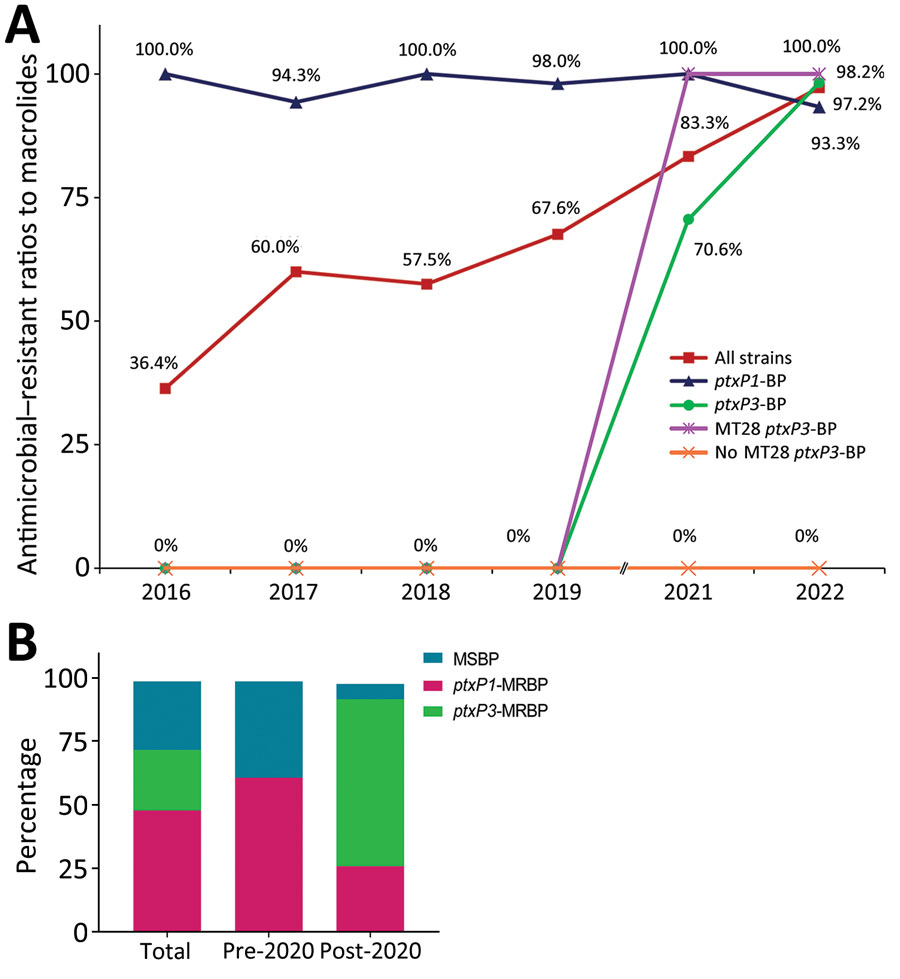Volume 30, Number 1—January 2024
Research
Molecular Evolution and Increasing Macrolide Resistance of Bordetella pertussis, Shanghai, China, 2016–2022
Figure 3

Figure 3. Changing macrolide resistance of circulating Bordetella pertussis strains, Shanghai, China, 2016–2022. A) ptxP3-strains showed very high resistance to macrolides after 2020. Resistance to macrolides was different in non-MT28 (0%) and MT28 (100%) isolates. B) Percentages of macrolide-sensitive BP, ptxP1-MRBP, and ptxP3-MRBP before and after 2020 show that ptxP1-MRBP strain was prevalent before 2020 but predominately ptxP3-MRBP spread after 2020. MRBP, macrolide-resistant Bordetella pertussis; MT, multilocus variable-number tandem-repeat analysis type.
1These first authors contributed equally to this article.
Page created: November 19, 2023
Page updated: December 20, 2023
Page reviewed: December 20, 2023
The conclusions, findings, and opinions expressed by authors contributing to this journal do not necessarily reflect the official position of the U.S. Department of Health and Human Services, the Public Health Service, the Centers for Disease Control and Prevention, or the authors' affiliated institutions. Use of trade names is for identification only and does not imply endorsement by any of the groups named above.